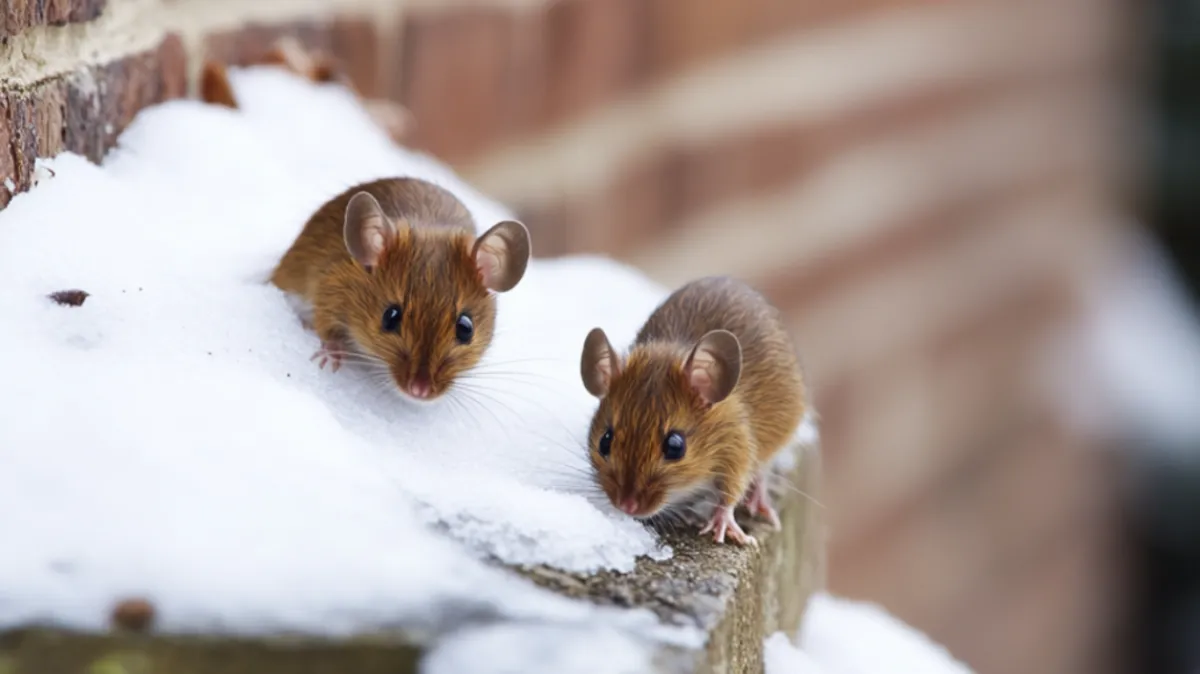Designed To Educate, Motivate & Inspire
The Western Way Journal

Winter Pests: Understanding and Preventing Cold Weather Invaders
Recognizing Winter Pests
To effectively combat an enemy, one must first understand it. Here are some common pests that might see your home as their winter retreat:
Rodents (Mice and Rats): These critters are on a quest for warmth and sustenance, exploiting any small openings to make their way indoors.
Cockroaches: Able to endure harsh conditions, cockroaches remain active all year, thriving particularly in the warm, moist areas of your home.
Spiders: Many spiders are benign, but the cozy corners of a heated home can attract them during the colder months.
Silverfish and Earwigs: Drawn to damp clothing and paper, these pests often populate storage areas.
Understanding their behaviors and habitats is your first line of defense.
Sealing Entry Points
Prevention starts with fortification. Secure your home against pests by eliminating their points of entry:
Inspect and Seal Cracks: Regularly examine your home's exterior for any breaches. Seal any cracks or holes, especially around entry points for pipes and cables, using durable caulk or other suitable materials.
Weatherstripping: Enhance the seals around windows and doors to not only keep pests out but also improve your home's energy efficiency.
Chimney Caps and Screens: Fit your chimneys with caps to prevent entry from flying pests, and place mesh screens over vents and other potential openings.
Indoor Environmental Control
The internal conditions of your home can either deter or attract pests. Here are ways to make your home less inviting to pests:
Reduce Moisture: Utilize dehumidifiers and repair any leaks. Moist environments are breeding grounds for pests like cockroaches and silverfish.
Declutter: Pests love to hide in clutter. Maintain clean and organized storage areas, opting for plastic bins over cardboard, which can attract pests.
Proper Food Storage: Store food in tightly sealed containers and dispose of garbage in a timely manner in sealed bins.
Natural Repellents
For those seeking alternatives to chemical interventions, several natural solutions exist:
Diatomaceous Earth: This non-toxic powder is effective against ants and cockroaches.
Essential Oils: Oils like peppermint, lavender, and eucalyptus can repel various insects.
Boric Acid: While less harsh than other chemicals, boric acid is a potent option against cockroach populations.
Preparing for Spring
With winter's end, it's time to prepare for spring, when many pests become active again:
Assess Winter Damage: Inspect your home for any pest-related damages or lingering issues as winter concludes.
Plan for Spring Pests: Continue efforts to seal your home and maintain cleanliness, focusing on areas like kitchens and bathrooms to deter spring pests like ants and flies.
Impact of Winter on Pest Lifecycles
Here’s a deeper look into how winter affects common household pests:
Rodents: Mice and rats are among the few pests that do not enter dormancy but instead seek shelter in warm homes. Winter signals a time for these rodents to find food and nesting sites, which is why infestations can become more apparent during these months.
Insects: Many insects enter a phase called diapause, similar to hibernation, during the winter. This physiological pause in development allows insects like ladybugs and stink bugs to survive the cold by significantly slowing down their metabolism. They often hide in secluded parts of homes until temperatures rise again.
Cockroaches: While generally less affected by winter due to the consistent climates of human habitats, cockroaches may still seek refuge in homes as outdoor temperatures drop. Their lifecycle slows, but they remain active and reproductive, which is why indoor infestations can escalate in winter if not managed properly.
Spiders: Most spiders seen indoors during winter are either seeking shelter or have been inside before the cold set in. Spiders can remain active in a controlled climate, continuing their lifecycle without entering dormancy.
Silverfish and Earwigs: These pests thrive in damp and humid environments, which can be prevalent in homes during winter due to increased use of heating systems. Their activity often increases in the home during winter as they seek out water sources and warmer areas.
Winter Wildlife Control
As temperatures plummet, wildlife creatures like squirrels, raccoons, and bats may find your home's attics or basements a perfect sanctuary to escape the cold. Controlling these winter invaders requires a blend of legal understanding, humane practices, and effective exclusion techniques:
Inspection and Identification: The first step in wildlife control is to inspect your home for signs of invasion, such as droppings, nesting materials, or structural damage. Identifying the type of wildlife is crucial as it determines the approach and legal implications of eviction and exclusion.
Legal Considerations: Before taking any action, it's important to check local wildlife protection laws. Many species, especially bats, are protected, and specific procedures must be followed to legally and humanely handle their removal.
Humane Eviction: For creatures like squirrels and raccoons, one-way doors can be an effective method. These doors allow the animals to exit for food but prevent them from returning. This method is especially humane as it does not harm the animals and simply restricts their access back into the home.
Exclusion Techniques: Once the animals are evicted, securing potential entry points is crucial to prevent future invasions. This involves sealing cracks, replacing loose tiles or siding, installing chimney caps, and securing vents with appropriate covers that deny entry but maintain ventilation.
Habitat Modification: Reducing the attractiveness of your home to wildlife is also key. This includes trimming tree branches away from the house, securing garbage bins, and removing outdoor food sources, such as pet food or bird feeders, which may attract animals.
Professional Help: In cases where wildlife is either dangerous or difficult to remove, professional wildlife control services are recommended. Professionals are equipped with the tools and knowledge to safely remove and prevent wildlife from re-entering your home.
For more information or to schedule your first inspection of the year, visit [https://westernwayservices.com/home]. Here’s to a healthy, happy, and pest-free new year!
Office:
8505 Church St Suite 7 Gilroy, CA 95020
Call
(408)
676-4774
Email:

Copyright 2024. All Right Reserved.
